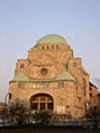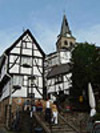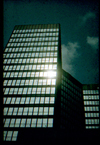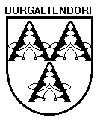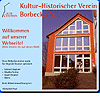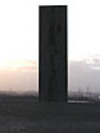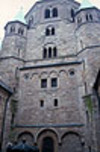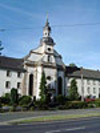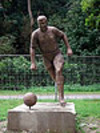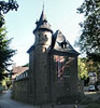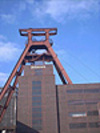Borbeck Palace
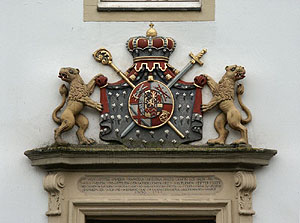
9th to 13th Century
Borbeck Palace goes back to a Frankish Oberhof of Essen's home for gentlewomen with the name Bort(h)beki, which was first mentioned in the 9th century. Another recording took place in the year 1227 through an argument by the former owner Knight Hermann von Borbecke with the Princess Abbess Adelheid von Wildenberg, who prevailed in the end with the support of Imperial Bailiff Adolf von Gymnich.
In the course of the 13th century a gradual build-up of a territorial dominance by the monastery happened, so that a spacial separation of the princess abbess's residence from the buildings of clerical usage was sought to give utterance to worldly claim to power. For this reason Abbess Berta von Arnsberg bought in 1288 (Lit.: Wemmers, Wroblewski, 2001) the obviously pawned Oberhof Borbeck from the knights Hermann and Wenemar von Altendorf, to built there the predecessor of today's palace. It hasn't been clarified till today whether the construction was done on the foundation walls of the old estate or just built on the ground.
14th to 16th Century
From the beginning of the 14th century onwards Borbeck became favourite residence of the princes abbesses. In 1372 it was called castrum for the first time, so one can assume that at time is was already a proper house or castle. Abbess Elisabeth von Nassau relocated in the named year the Freigericht (kind of open-air law court) to Borbeck with the consent of Emperor Charles IV.
The castle facility was used subsequently often as a refuge for Essen's gentlewomen; for example in 1426, when a monastery internal disagreement arose about Margarete von der Mark-Arensberg's succession. The abbess had resigned and with the support of the male canons Margarethe von Limburg was appointed abbess. But this happened against the votes of the other ten canonesses, which were basically the only ones who had the right to vote for a new abbess. Their favourite Elisabeth von Beeck fled with her followers to the castle facility in Borbeck and was there besieged by the Limburg vassals. But through the support by Elisabeth's family the Limburger could be chases away. A two-year feud followed before the papal legate could mediate between the disputants and Elisabeth von Beeck was confirmed by the pope as abbess.
From the 15th century a coin can be proved from the former castle. Abbess Sophia von Gleichen started to mint coins, the so-called 'Borbecker Gulden' and the 'Borbecker Groschen'.
In 1493 the gate house and stables burned down during an attack.
Borbeck was destroyed to a large extend by Spanish troops during the Dutch Revolt. But the building was reconstructed until 1598 by the Princess Abbess Elisabeth von Manderscheid-Blankenheim and even further extended. The three-storey main house, made from quarrystone had after these constructional measures a nearly 16 times 18 metres square layout .Picture Copyright: http://de.wikipedia.org/wiki/Bild:SchlossBorbeck02.jpg

17th to 19th Century�
The Abbess Anna Salome von Salm-Reifferscheidt relocated completely�from Essen to Borbeck in the year 1665 had the main building rebuilt in the renaissance style on the old foundation walls. The forward, northern part with its two corner towers and the middle gable stem from this time. The square towers and the buildings were accentuated through corner ashlars, which are today hidden beneath light plaster.
Palace Borbeck owes its present form to Abbess Franziska Christine von Pfalz-Sulzbach. She extended the building towards the south from 1744 onwards by probably five window lines. Also the 42 hectare palace park was created under her direction. It had water gardens, aviaries, a small island and a artificially created castle ruin. Inside the palace park arises also the Borbecke, which feeds via a narrow stream ditches and the palace pond.
The last Essen Princess Abbess Maria Kunigunde von Sachsen planned a complete new building of her residence but the plan was never realised as the monastery territory was taken over by Prussia in 1802. It meant at the same time the end of this sovereign enclave on Prussian soil. After the secularisation in the year 1803 Palace Borbeck came to the earls Recke-Volmarstein and from 1806�to 1814 the duchy Berg and with that under French authority.
In 1827 Imperial Baron Clemens von F�rstenberg bought the facility and had a new neo-classical building including royal stables constructed in place of the old servants quarters and farm buildings from 1839 to 1842 by the Essen architect Heinrich Theodor Freyse. The renaissance heads in the centre gable of the three-storey plaster building stem from Palace Horst. The integrated quarrystone tower is a relic of the former medieval�barbican from the 14th/15th century.�One can assume that it had more than the still preserved three storeys in�earlier times. Until the rebuilding under the Baron von F�rstenberg it was used among other as watch tower and prison. Following that it was used as archive and beer cellar.
The palace owner also attached the wrought-iron trellised gate from the 17th century at the main entrance in 1846. It�belonged originally�to the Palace Hugenpoet, which was also owned by the family von F�rstenberg since 1831. When the family relocated completely to�Hugenpoet in 1879, the accommodations of Palace Borbeck were no longer used. The city arms of Essen (1887) stems from the upper part of the gate.� �Picture Copyright : http://de.wikipedia.org/wiki/Bild:SchlossBorbeck03.jpg
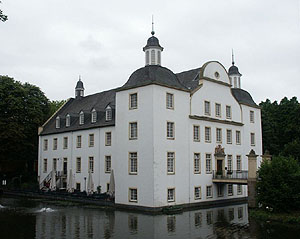
20th Century��
The palace park was opened to the public in 1920 against payment.
The city of Essen bought the facility from the F�rstenbergs in 1941 to use it, after rebuilding and restoration as city administration offices in the fifties and sixties. With the exception of the vaulted cellar and some decorative interior, stemming from Palace Horst, the historical interior was lost through this building measure. In the course of this work, the wrought-iron gate from Palace Hugenpoet obtained its present location at the park entrance.
With the move of the urban department to a new administration building in the seventies, the palace's upper floor and the adjoining buildings stayed unused for a long time.�Beginning of the eighties a initiative for the usage of the palace as a citizen centre was founded. But this concept was not implemented despite a three-year preparation.
The Palace today
Palace Borbeck is used since 1983 as a culture and meeting place for the citizens of Essen. Apart from the Borbecker registry office (that has a special wedding room in the palace) and�the Folkwang Music School it�also houses�part of the municipal adult education. The former farm building is now used regularly for exhibitions and mechanic VHS courses.
In the basement is restaurant situated with the name 'Zur M�nze', in reference to the old coinage tradition at Palace Borbeck.
First the palace was listed in 1985, then in 1998 the palace area.
After extensive renovation work in the years 2004�till 2006 the city of Essen was able to reopen the derelict moated castle that today has the baroque form from the years 1744 and 1762. An oil painting by Heinrich Foelix from the year 1772, which depicts the last abbess Maria Kunigunde, was purchased at a Sotheby's auction and hangs now in the palace's tower room. Furniture, dining service, gobelin tapestries and a chess game from the 17th and 18th century are housed here.Picture Copyright : http://de.wikipedia.org/wiki/Bild:SchlossBorbeck01.jpgThis article is based on the article http://de.wikipedia.org/wiki/Schloss_Borbeck �from the free Encyclopedia Wikipedia and is under http://de.wikipedia.org/wiki/GNU-Lizenz_f%C3%BCr_freie_Dokumentation . In Wikipedia is a�http://de.wikipedia.org/w/index.php?title=Schloss_Borbeck&action=history available. �
�

 Deutsch
Deutsch Nederlands
Nederlands Dansk
Dansk Österreichisch
Österreichisch Po Polsku
Po Polsku Italiano
Italiano Francaise
Francaise Portugiesisch
Portugiesisch




